






Collaborative Negotiation – 6 Important Reminders About This Win-Win Approach
Getting to Yes: How To Negotiate Agreement Without Giving In, by Roger Fisher, was written in 1981, yet remains a best-seller. Why? Because it’s brilliant. Because it’s straightforward. Because it speaks to us leaders who value relationships. It’s a universally applicable method for negotiating personal and professional disputes without getting taken – and without getting angry. The book offers a concise, step-by-step, proven strategy for coming to mutually acceptable agreements in every sort of conflict. And as leaders, we know how invaluable this practice is.
If you’re like many, you’ve probably already read the book. But if you’re like most, you’d probably also benefit from a periodic refresher. If you don’t have several hours to spend, I’ve taken some liberties to summarize the most salient points below.
Collaborative negotiation in a nutshell
Collaborative negotiation – also called constructive, principled or interest-based negotiation – is an approach that treats the “relationship” as an important and valuable element of what’s at stake, while seeking an equitable and fair agreement. As opposed to always conceding in order to sustain the relationship.
Win-win
A “competitive” approach to negotiation assumes a fixed pie, zero-sum, win-lose situation. In collaborative negotiation, it’s essentially assumed that the pie can be enlarged by finding things of value to both parties, creating a win-win situation, so that everyone leaves the table feeling like they’ve gained something of value.
Fair-process
Unlike most of the animal kingdom, we humans have a profound and deep need for fairness. And when this doesn’t happen – even if we’re the ones emerging as “winners” from a competitive negotiation – the end result is often not truly satisfying. A better feeling, and result, occurs when our needs are met; including the need for fairness.
Joint problem-solving
A collaborative approach to negotiation strives to convert individual wants into a single problem, bringing both parties together to work on solving the problem. The theory stems from the notion that by converting individual positions, wants and desires into separated problems, the negotiators are able to free themselves of any jealously or personal attachment to their requirements, in order to take a more objective and equitable position to collaborate from.
Transparency and trust
While it may not be possible or necessary to give away all of your information, there’s little tolerance for deceptive practices in collaborative negotiation. Moreover, gaining trust will be next to impossible. A simple way to eliminate suspicion is to be open and transparent, giving out most or all of your information (i.e. your wants, desires, end goal) before the other party requests it. The exact opposite of playing your best poker hand!
Dealing with competitive negotiators
So what happens when not everyone is playing by the same rules? Indeed, a huge challenge can occur if the other party takes a competitive approach, and tries to take advantage of your desire to collaborate. Sometimes we’re even perceived by competitive negotiators, to be weak. A proven way to deal with this type of situation is to be assertive and remain calm. Fend off your fight-or-flight reaction, recap your interests and summarize what you heard as their interests. Offer up a bit of an olive branch, while staying strong. And perhaps most importantly, know in advance what your BATNA is (back-up alternative to negotiated agreement), and demonstrate that you’re prepared to use it.
Remember, being a collaborative leader does not mean being weak or giving in. On the contrary, a collaborative approach seeks to gain the best possible solution for all. A true win-win situation. As educators, this means that our teachers, parents, students and school boards can all walk away feeling like they’ve come out winners. Kind of like a good haggle over a cup of tea at a middle-eastern carpet bazaar!
Think about the next time you need to engage your stakeholders in a collaborative negotiation. What’s your starting position? What are you prepared to give up? What are you not? And what’s your fall-back plan?


